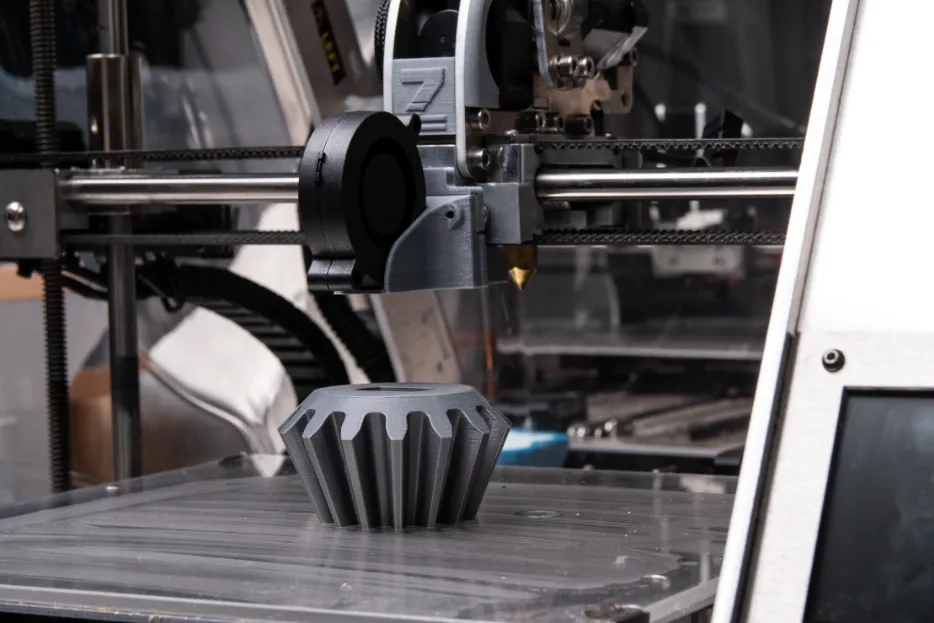
Imagine having a superpower – the power to turn your imagination into real objects. That’s what 3D printing is all about. It’s a technology that can take your digital designs and transform them into tangible things, layer by layer. It’s like having your own magic printer. But how exactly does this magic work, and how is it changing the world? Let’s explore the fascinating world of 3D printing.
Table of Contents
What is 3D printing?
3D printing is a process of creating three-dimensional objects from digital files. The process starts with a 3D model, which is a computer-aided design (CAD) file that describes the object’s shape and dimensions. The 3D printer then uses a variety of techniques to build the object layer by layer, adding material until the object is complete.
How does 3D printing work?
There are many different types of 3D printers, but they all work by adding material layer by layer. The most common types of 3D printers use one of the following techniques:
Fused deposition modeling (FDM)
This is the most common type of 3D printing. It uses a heated nozzle to melt plastic filament, which is then deposited onto a build platform. The layers are stacked on top of each other until the object is complete.
Stereolithography (SLA)
This type of 3D printing uses a laser to cure liquid resin, which then hardens. The laser traces the shape of the object layer by layer, until the object is complete.
Selective laser sintering (SLS)
This type of 3D printing uses a laser to sinter powdered material, which then melts and fuses together. The laser traces the shape of the object layer by layer, until the object is complete.
Digital light processing (DLP)
This type of 3D printing is similar to SLA, but it uses a projector to cure the resin instead of a laser.
What are the different types of 3D printers?
There are many different types of 3D printers, each with its own strengths and weaknesses. Some of the most common types of 3D printers include:
Desktop 3D printers: These are small, affordable 3D printers that are designed for home use. They are not as powerful as industrial 3D printers, but they are still capable of creating high-quality objects.
Industrial 3D printers: These are large, powerful 3D printers that are designed for use in manufacturing. They are capable of creating large, complex objects with high accuracy.
Medical 3D printers: These are 3D printers that are specifically designed for use in healthcare. They are used to create medical devices, such as prosthetics and implants.
Education 3D printers: These are 3D printers that are specifically designed for use in schools. They are used to teach students about science, engineering, and design.
Art and design 3D printers: These are 3D printers that are specifically designed for use in art and design. They are used to create sculptures, jewelry, and other works of art.
What are the benefits of 3D printing?
There are many benefits to using 3D printing. Some of the most important benefits include:
- Customization: 3D printing can be used to create custom objects that are tailored to specific needs. This is a major advantage over traditional manufacturing methods, which are often limited to mass production.
- Efficiency: 3D printing can be a very efficient way to manufacture objects. It can reduce waste and save time and money.
- Flexibility: 3D printing is a flexible technology that can be used to create a wide variety of objects. This makes it a valuable tool for prototyping, manufacturing, and art and design.
- Innovation: 3D printing is a disruptive technology that is opening up new possibilities for innovation. It is being used to create new products and services that were not possible before.
How 3D printers are changing the world
3D printers are already having a major impact on the world, and their impact is only going to grow in the years to come. Some of the most important ways that 3D printers are changing the world:
Manufacturing: 3D printing is being used to create prototypes, custom parts, and even finished products. This is revolutionizing the manufacturing industry, making it more efficient and flexible. For example, 3D printing is being used to create custom car parts, personalized medical devices, and even food.
Healthcare: 3D printers are being used to create medical devices, such as prosthetics and implants. They are also being used to create personalized medicine, such as drugs and vaccines. For example, 3D printers are being used to create prosthetic limbs that are custom-fit to each individual patient.
Education: 3D printers are being used in schools to teach students about science, engineering, and design. They are also being used to create custom educational materials. For example, 3D printers are being used to create models of molecules and other complex objects.
Art and design: 3D printers are being used to create sculptures, jewelry, and other works of art. They are also being used to create prototypes for new products. For example, 3D printers are being used to create custom-made jewelry and figurines.
Other applications: 3D printers are being used in a variety of other applications, such as food production, construction, and automotive. For example, 3D printers are being used to create food products, such as pizza and chocolate.
The future of 3D printing
The future of 3D printing is bright. The technology is still in its early stages, but it has the potential to revolutionize many industries. 3D printing is already having a positive impact on the world, and its impact is only going to grow in the years to come.
Some of the potential future applications of 3D printing include:
- Creating custom homes and buildings
- Producing food and medicine on demand
- Personalizing medical treatment
- Repairing damaged objects
- Creating new forms of art and design
- Developing new materials and products
The possibilities are endless, and it is exciting to think about how 3D printing will change the world in the years to come.
Challenges and limitations of 3D printing
While 3D printing has many advantages, there are also some challenges and limitations. Some of the challenges include:
- The cost of 3D printers and materials can be high.
- The printing process can be slow and time-consuming.
- The resolution of 3D printers is limited, so the objects they create may not be as detailed as objects created by traditional manufacturing methods.
- 3D printing can be used to create objects that are not safe or durable.
Despite these challenges, 3D printing is a rapidly growing technology with a lot of potential. As the technology continues to develop, the cost of 3D printers and materials will come down, the printing process will become faster and more efficient, and the resolution of 3D printers will improve. This will make 3D printing more accessible and affordable, and it will open up new possibilities for innovation.
The Possibilities of 3D Printing
So, 3D printing is changing the world in big ways. It’s not just about making stuff; it’s about making our lives better. Whether it’s creating custom homes, printing food, or helping with medical treatments, the future looks bright. Sure, there are some challenges, but we’re getting better at this every day. It’s like watching a new era unfold, full of exciting possibilities.








